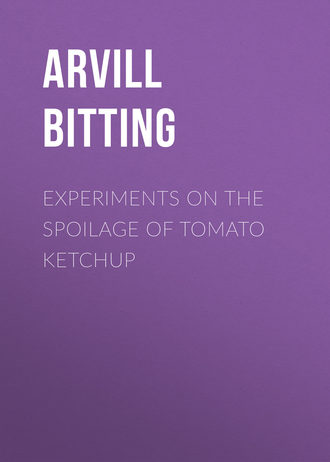 полная версия
полная версияExperiments on the Spoilage of Tomato Ketchup
5. Sodium benzoate, even when used in the proportion of 0.1 per cent, is not always effective, and has an injurious effect upon the living matter of the molds, shown by the distortion and swelling of the filaments, which are filled with a coarse granular protoplasm containing much fat.
6. Artificially colored ketchup can be detected under the microscope by the fact that certain tissues, normally colorless, are dyed red, or by the presence of fine, red, amorphous particles which do not go into solution.
7. Ketchup made from whole ripe stock in a cleanly manner gives a clean appearance under the microscope, but few molds, yeasts, and bacteria being present. On the other hand, ketchup made from trimming stock, or from tomatoes that have been allowed to spoil, contains immense quantities of these growing organisms which may be killed in the process of manufacture, but still give proof of the character of the material used. Ketchup as ordinarily made from trimming stock should, therefore, be designated, so as to differentiate it from that made from sound fresh tomatoes, as the two products are radically different. This exactness in labeling is due no less to the manufacturer than to the consumer, as it is impossible to make the superior product in fair competition with the inferior one, other conditions being equal, unless the two are properly designated, there being naturally some difference in the price.
1
Origin of Cultivated Plants, 1890.
2
Webber, H. J., Yearbook, U. S. Department of Agriculture, 1899.
3
U. S. Dept. Agr., Exper. Sta. Record, 1899-1900, 11: 250.
4
Brannt, W. L., A Practical Treatise on the Manufacture of Vinegar, 1900, p. 455.
5
Principles and Practice of Brewing, 1907, p. 284.
6
Ibid., p. 281.



